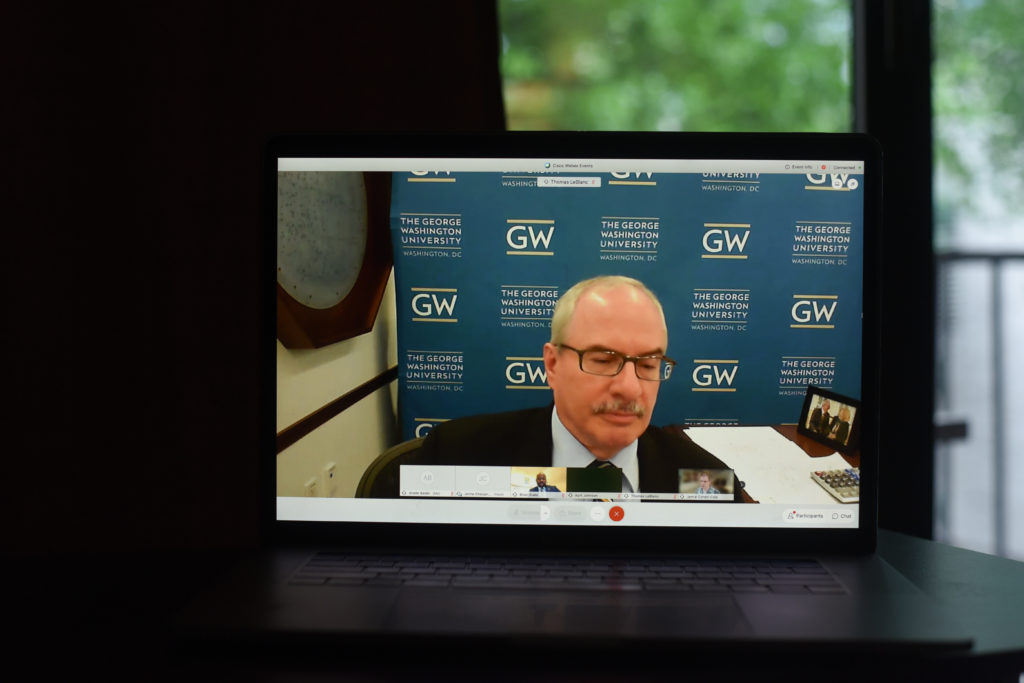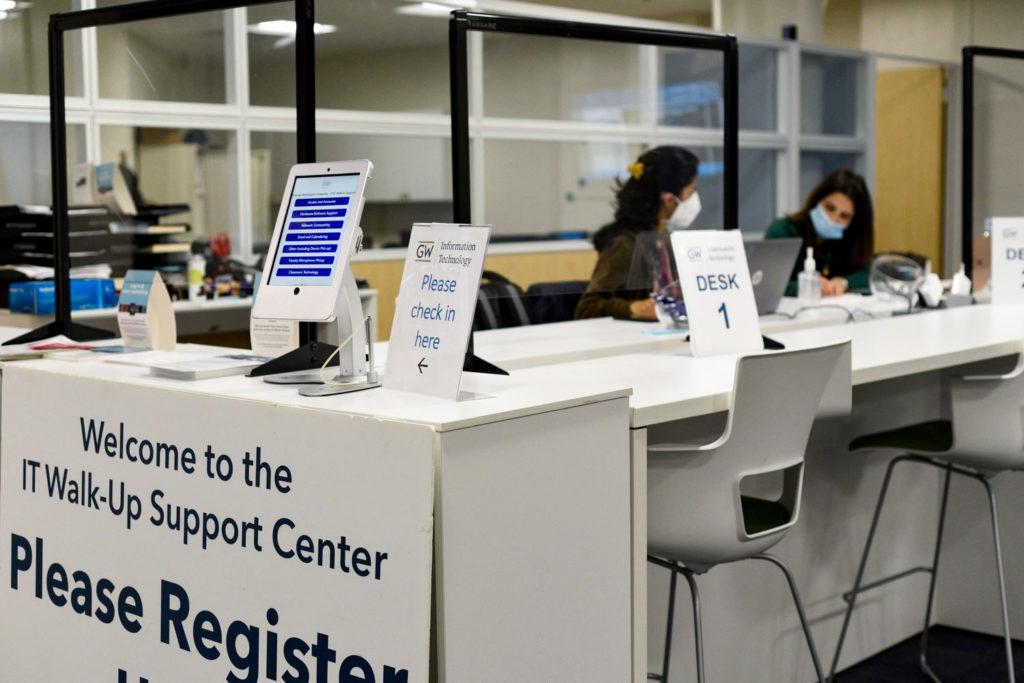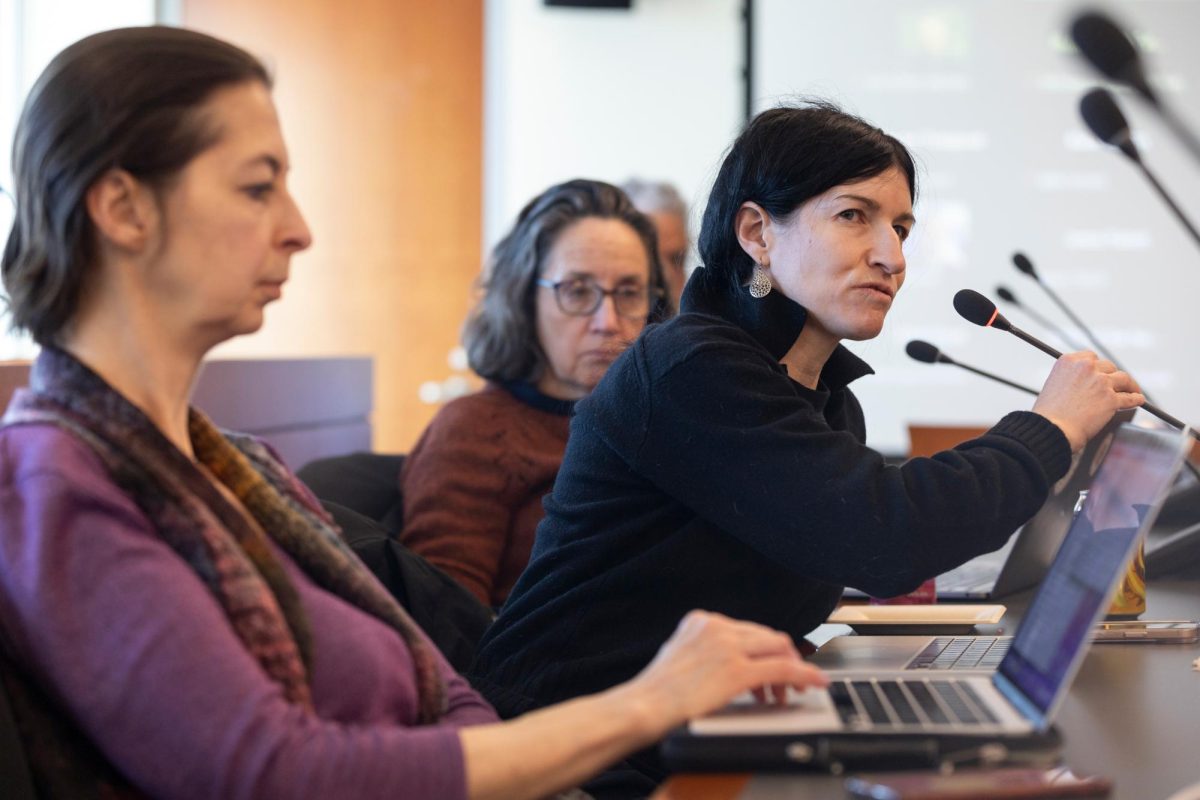Updated: Sept. 24, 2020 at 1:16 p.m.
Editor’s note: An earlier version of this article stated that undergraduate enrollment fell by almost a quarter this year based on The Hatchet’s interpretation of data provided at the Faculty Senate meeting. University President Thomas LeBlanc provided further context on enrollment in an email sent to the GW community after this article’s publication.
Officials said undergraduate enrollment fell by about 7.2 percent this year based on preliminary estimates, requiring a “second phase” of budget cuts in the coming weeks, at a Faculty Senate meeting Friday.
University President Thomas LeBlanc said about 11,000 undergraduate students are enrolled this fall, which fell short of last year’s figure by roughly 1,000 students. The loss in tuition revenue from decreased enrollment is largely driving GW’s budget shortfall, which is now estimated to be $180 million on an annualized basis, LeBlanc said.
He added that estimates will continue to change until the “benchmark date” in early October, which is used for official enrollment data and revenue statistics.
“Given the fluid nature of the pandemic and its effects on the University, as we expected and repeatedly tried to remind folks, our estimate will always be evolving until we finally get to the benchmark,” LeBlanc said. “But as of now, we have a much better idea of fall enrollment and tuition revenue because we’ve actually passed the deadline for paying your bills.”
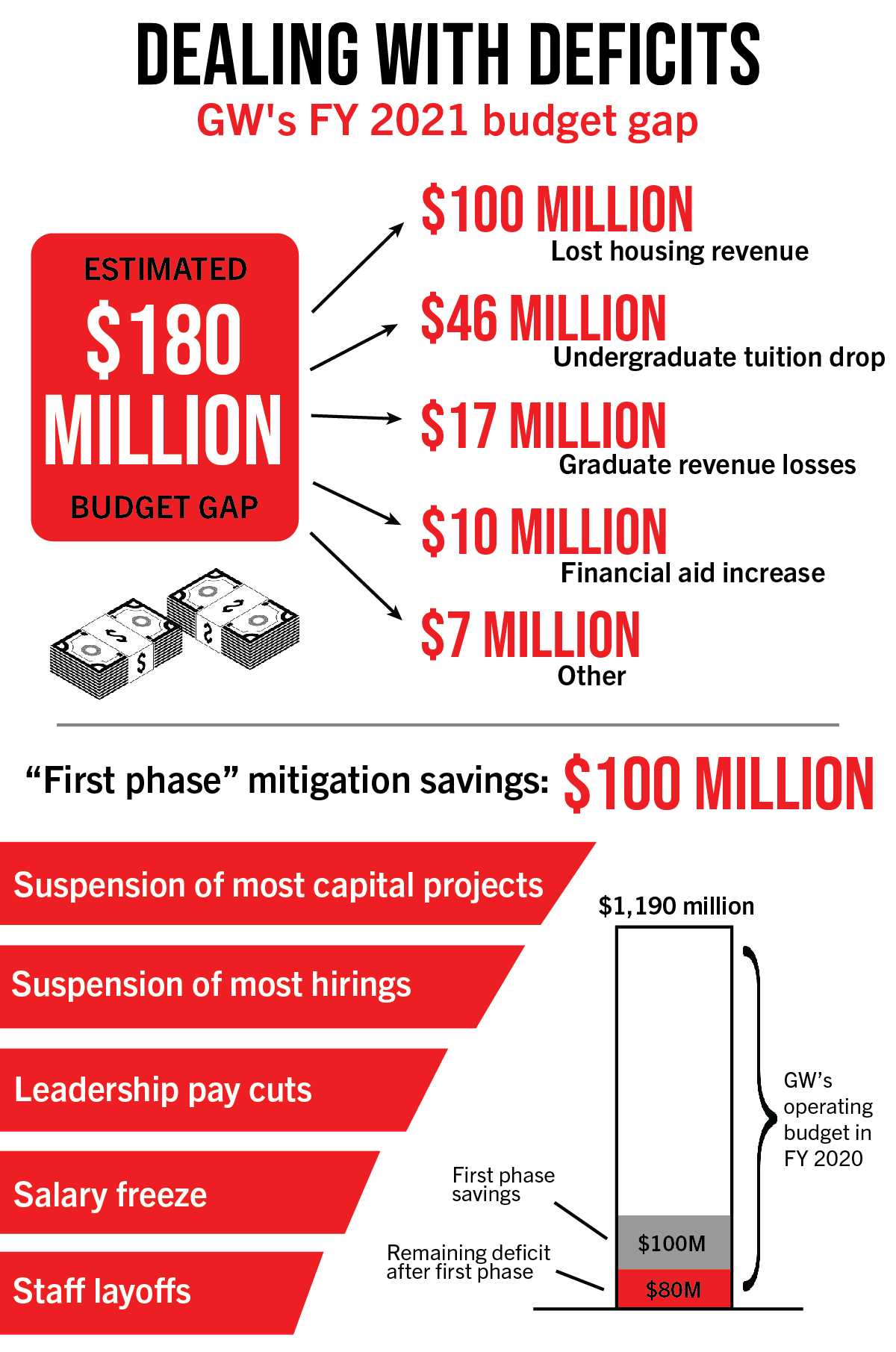
Sidney Lee | Graphics Editor
The estimated enrollment drop is less than the 30 percent enrollment tumble that officials originally estimated as part of remote instruction budget projections in May.
Prior to the pandemic, officials sought to reduce the undergraduate population by 20 percent over five years. Officials released early and regular decisions in February and March before the full onset of the pandemic but later admitted hundreds of students from the waitlist through the summer to increase enrollment levels.
Financial impact
LeBlanc said the enrollment drop, based on current estimates, would reflect a nearly $76 million budget impact. He said officials are projecting a decrease of undergraduate and graduate tuition dollars by $46 million and $17 million, respectively, and about a $10 million increase in financial aid.
GW’s financial projections assume classes remain online for the entire academic year, which removes about $100 million in housing revenue, LeBlanc said.
He said officials are completing the first phase of budget cuts, which will reduce expenses by roughly $100 million and be completed within two weeks. The cuts include a suspension of most capital projects and hirings, salary freezes and staff layoffs.
LeBlanc added that officials have laid off about 250 staff members, who had an average salary of roughly $75,000. At the meeting, Provost Brian Blake confirmed the layoffs include some Center for Career Services employees.
Officials have repeatedly declined to answer The Hatchet’s questions about layoffs in specific offices. The layoffs include dozens of employees in IT offices, the career center, facilities and event departments.
“Even with our revised enrollment projections as positive as they are today, it’s clear that we need to take additional mitigation steps,” LeBlanc said at the meeting.
He said officials will likely make final decisions about the second phase of cuts in the next week. The phase already includes suspensions of the University’s base and matching retirement contributions for employees beginning Oct. 1.
“I anticipate things could get better,” he said. “We built in fairly conservative projections so I don’t see it getting much worse than this.”
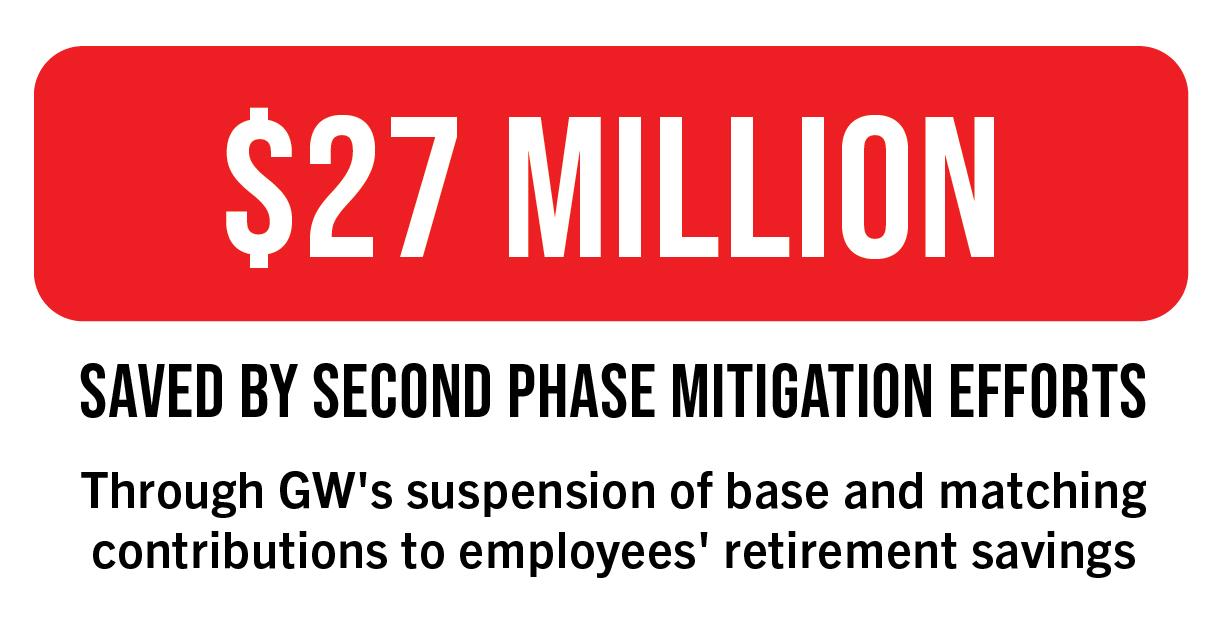
Sidney Lee | Graphics Editor
LeBlanc added that there have been no discussions among administrators about laying off tenured or tenure-track faculty. Officials have discussed temporarily reducing faculty salaries, he said.
“We talked to the senate leadership and Board of Trustees, but no decision has been made,” LeBlanc said.
Enrollment drop
Provost Brian Blake said undergraduate registration is “down” 7.2 percent overall, and non-degree registration – which includes exchange students – decreased by 31 percent. About 400 more students requested deferrals for enrollment and leave of absences compared to last year, and “hundreds” more students are now attending GW part time, he said.
LeBlanc said more than 600 upperclassmen chose not to return this fall amid the pandemic. He said 175 international students were not able to or chose not to enroll, and the University enrolled 220 fewer new domestic students this year based on current estimates.
Blake said the graduate population increased this year by 1.3 percent, which is just under half of the 3 percent increase officials had originally anticipated. Officials held graduate tuition steady this year, which led to an annual budget shortfall in graduate tuition.
“There is some gap there as well even though we had a higher enrollment than last year,” Blake said.
He added that the “biggest piece” to enrollment changes this year is a drop in the international population by 916 students – 253 undergraduates, 556 graduates and 107 non-degree students.
The drop marks another setback for the University’s goal of increasing international enrollment to 15 percent of undergraduates and 30 percent of graduate students by 2022.
“As a provost, there’s been some concern there because these shortcomings in our enrollment are likely to follow us, particularly when it comes from that particular population,” Blake said. “I honestly feel a certain way about this too because I know that body of students provides diversity and a real experience for the student body.”


